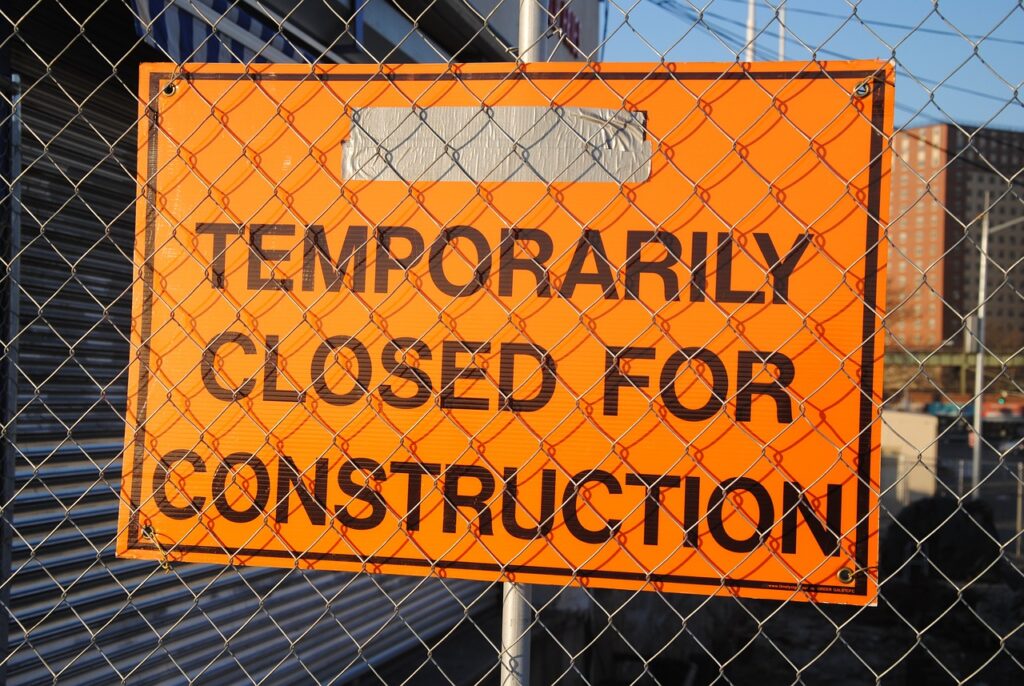Preconstruction planning is a critical phase in any commercial development project. It lays the foundation for the success of the entire construction process. By thoroughly assessing the requirements, assembling a skilled team, conducting site analysis, and navigating the permit and approval process, developers can ensure a smooth and efficient construction phase. In this article, we will outline the essential steps commercial developers should take in their preconstruction checklist, providing valuable insights into each stage of the process.
Understanding the Importance of Preconstruction Planning
Before diving into the specific steps, it is important to understand why preconstruction planning is vital to the success of a commercial development project. Simply put, preconstruction planning sets the stage for effective communication, collaboration, and organization. It allows developers to identify and address potential issues before construction begins, saving both time and money in the long run.
Furthermore, preconstruction planning plays a crucial role in risk management. By thoroughly assessing potential risks and challenges at the outset, developers can proactively implement strategies to mitigate these risks, ensuring a smoother construction process and minimizing costly delays or setbacks.
The Role of Commercial Developers in Preconstruction
As a commercial developer, your role in the preconstruction phase is multifaceted. You are responsible for overseeing the entire project, from conceptualization to completion. This includes planning, coordinating, and managing all aspects of the development process, from site analysis to obtaining necessary permits.
Moreover, commercial developers must also act as liaisons between various stakeholders involved in the project, including architects, engineers, contractors, and regulatory authorities. Effective communication and collaboration among these parties are essential for ensuring that the project stays on track and meets its objectives within the specified timeline and budget.
Key Elements of Preconstruction Planning
To ensure a successful preconstruction phase, developers need to focus on several key elements:
- Establishing project goals and objectives
- Defining project scope and timeline
- Evaluating budget constraints
- Assessing potential risks and challenges
By addressing these elements early on, developers can pave the way for a seamless construction process. Additionally, incorporating sustainable practices and innovative technologies into the preconstruction planning phase can enhance the project’s long-term viability and environmental impact, aligning it with modern industry standards and regulations.
Assembling Your Preconstruction Team
One of the most crucial aspects of successful preconstruction planning is assembling a skilled and experienced team. This team will be instrumental in navigating the complexities of the development process and should include professionals such as architects, general contractors, engineers, and other specialists.
When it comes to selecting the right architect for your project, it’s essential to consider more than just their portfolio. A great architect not only brings creativity and innovation to the table but also possesses a deep understanding of local building codes and regulations. Look for architects who have a keen eye for sustainable design practices and a collaborative approach to working with clients. By choosing an architect who aligns with your values and goals, you can ensure a seamless and successful design process.
Selecting the Right Architect
The architect you choose will play a pivotal role in the design and functionality of your commercial development. Look for architects who have experience in similar projects, a solid track record, and a strong understanding of your vision.
When it comes to hiring a reliable general contractor, reputation speaks volumes. A reputable general contractor not only brings a wealth of construction knowledge and expertise to the table but also fosters a culture of transparency and open communication. By partnering with a contractor who values quality craftsmanship and client satisfaction, you can rest assured that your project will be in good hands from start to finish.
Your general contractor will be responsible for overseeing the construction process, managing subcontractors, and ensuring the project stays on track. It is crucial to select a reliable contractor with a proven track record of successful projects and excellent references.
Collaborating with engineers and other specialists is essential to the success of any construction project. Structural engineers play a critical role in ensuring the safety and integrity of the building, while HVAC experts focus on creating efficient and sustainable heating and cooling systems. Environmental consultants help navigate complex regulations and ensure your project is environmentally responsible. By bringing together a team of diverse specialists early in the planning stages, you can proactively address potential challenges and optimize the overall design and construction process.
Collaborating with Engineers and Other Specialists
Depending on the nature of your project, you may need to collaborate with several specialized professionals, such as structural engineers, HVAC experts, or environmental consultants. Engage these specialists early on to incorporate their expertise into the planning process.
Conducting a Site Analysis
Before moving forward with any commercial development, it is essential to conduct a thorough site analysis. This process involves evaluating the physical characteristics of the site and assessing any potential environmental impact.
Site analysis is a crucial step in the development process, as it provides valuable insights that can influence the design and construction of a project. By understanding the unique features of a site, developers can make informed decisions that optimize the use of space and resources.
Evaluating the Physical Characteristics of the Site
Take into consideration factors such as topography, soil conditions, drainage, accessibility, and any existing structures or utilities. This information will help shape your project plan and determine the feasibility of your development.
Topography plays a significant role in site planning, as it can impact the layout of buildings, roads, and utilities. Soil conditions are also critical, as they can affect the stability of structures and the cost of construction. Drainage considerations are essential to prevent flooding and erosion, while accessibility ensures that the site is easily reached by vehicles and pedestrians.
Assessing Environmental Impact
Environmental impact assessment involves evaluating potential environmental risks and implementing measures to mitigate them. This includes assessing potential noise pollution, air quality, water resources, and waste management strategies. By addressing these concerns early on, you can ensure compliance with environmental regulations and minimize any negative impact on the surrounding environment.
Environmental impact assessments are essential for sustainable development, as they help identify ways to reduce the ecological footprint of a project. By incorporating green design principles and sustainable practices, developers can create projects that are environmentally friendly and socially responsible.
Developing a Feasible Project Plan
Once you have obtained a clear understanding of the site and its constraints, it is time to develop a comprehensive project plan that outlines the scope, budget, and timeline of your development. This plan serves as a roadmap for the entire project, guiding you through each phase from inception to completion.
Before diving into the details of the project plan, it is crucial to conduct a thorough analysis of the site, taking into consideration factors such as environmental impact, zoning regulations, and infrastructure requirements. By conducting a comprehensive site analysis, you can proactively address any potential challenges that may arise during the development process.
Establishing a Realistic Budget
Working closely with your financial team and other stakeholders, establish a realistic budget that takes into account all expenses, including design, construction, permits, and contingency funds. Keep in mind that unexpected costs may arise during the construction process, so it is essential to have a contingency plan in place. By creating a detailed budget that anticipates potential challenges, you can ensure that your project remains financially viable throughout its execution.
Creating a Comprehensive Timeline
A well-defined timeline is critical to keeping your project on track. Develop a realistic and detailed schedule that includes key milestones, deadlines for permits, and construction phases. This will help you manage resources effectively and identify potential bottlenecks early on. By breaking down the project into manageable tasks and setting clear timelines for each, you can streamline the development process and minimize delays.
Navigating the Permit and Approval Process
Obtaining the necessary permits and approvals is a crucial step in commercial development. Failing to comply with local building codes and regulations can result in costly delays and legal issues, making this step in the preconstruction checklist essential.
Before diving into the permit and approval process, it is important to understand the intricate web of rules and regulations that govern construction projects. Local building codes dictate the standards for structural integrity, fire safety, and other crucial aspects of a building’s design. Zoning regulations, on the other hand, control how a property can be used and developed within a specific area. By familiarizing yourself with these requirements, you can proactively address any potential issues that may arise during the approval process.
Understanding Local Building Codes and Regulations
Research and familiarize yourself with the local building codes, zoning regulations, and other legal requirements that apply to your development. Engage with local authorities and consultants to ensure you comply with all necessary regulations.
Moreover, it is essential to stay informed about any recent updates or changes to the building codes and regulations in your area. Building regulations are constantly evolving to adapt to new technologies, environmental concerns, and safety standards. By staying up-to-date with these changes, you can ensure that your project meets the latest requirements, reducing the risk of costly revisions or delays.
Securing Necessary Permits and Approvals
Work closely with your team to gather all required documentation and submit permit applications to the appropriate authorities. This process can be time-consuming, so it is important to start early and maintain open lines of communication with the relevant agencies.
Additionally, establishing a strong rapport with the permitting authorities can facilitate the approval process. Building relationships with the officials responsible for reviewing and approving your permits can help streamline the process and address any concerns or questions promptly. By demonstrating your commitment to compliance and cooperation, you can navigate the permit and approval process more efficiently, paving the way for a successful development project.

Conclusion
Preconstruction planning is the backbone of any successful commercial development project. By following the steps outlined in this checklist, commercial developers can minimize risks, communicate effectively, and ultimately deliver a high-quality project that meets all objectives. By conducting a thorough site analysis, assembling a skilled team, developing a feasible project plan, and navigating the permit and approval process diligently, developers can ensure a smooth transition into the construction phase.
SteelCo Buildings has 24+ years of experience delivering PEMB materials nationwide and commercial construction services in Georgia. We offer turnkey design-build services for various facility types across the industrial, retail/mixed-use, manufacturing and distribution, self-storage, commercial, and other sectors.
Listed as an ENR Southeast Top Contractor for 2024, our general contracting service expertise can take your projects from concept to reality with customizations to reflect your greatest needs and wants.
Learn more about our experience in steel building design and design-build services.
























